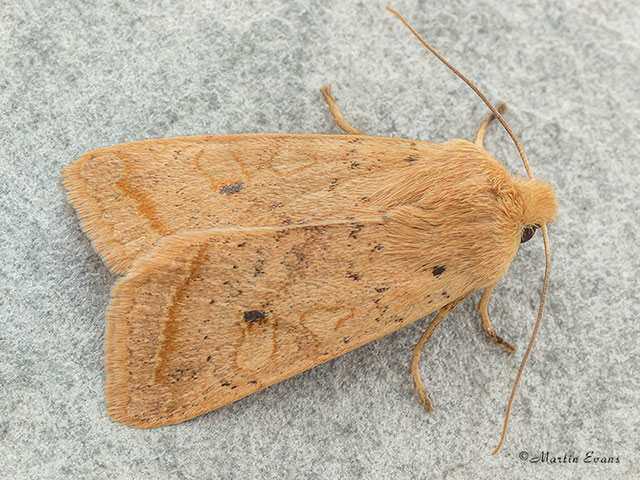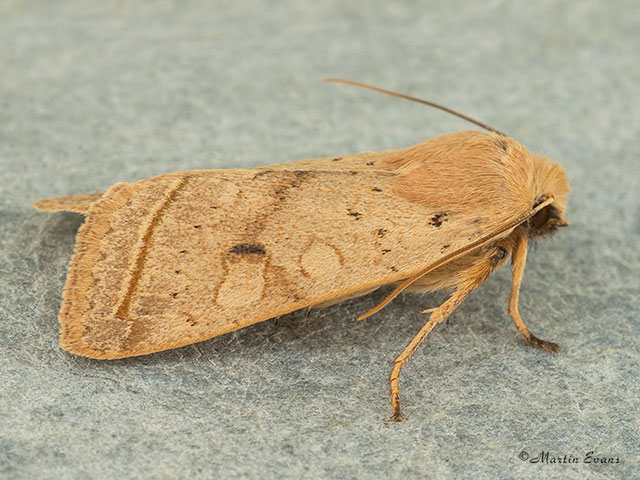Noctuidae
73.190 Yellow-line Quaker Leptologia macilenta (Hübner, [1809])
Common
Similar species: The yellow to pale orange-brown forewing with an orange-brown to brown outer cross-line edged with creamy yellow, plus the large black dot at the base of the wing is enough to separate this moth from other British or Irish species.
Forewing: 14 to 16mm
Habitats: Deciduous woodland, calcareous grassland scrub, hedgerows, moorland, heathland and gardens.
Habits: The moth visits over-ripe blackberries and Ivy blossom. It is attracted to sugar and light.
Foodplant: The larva initially feeds on oak, Beech, sallow, Hawthorn or poplar catkins or within a spun terminal shoot, after which it moves on to the leaves. Later it may feed on herbaceous plants. Moorland specimens may feed wholly on Heather. The full-fed larva constructs a soil-covered cocoon under the earth where it rests until it pupates several weeks later.
On parts of the European mainland it has been recorded as feeding mainly on Ash. Also reported feeding on Hornbeam and Meadow Vetchling.




